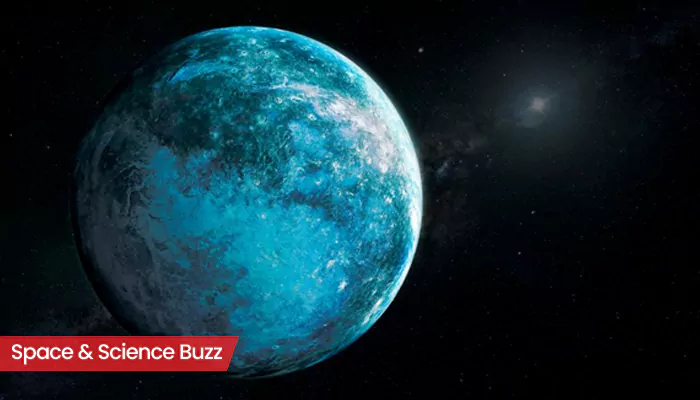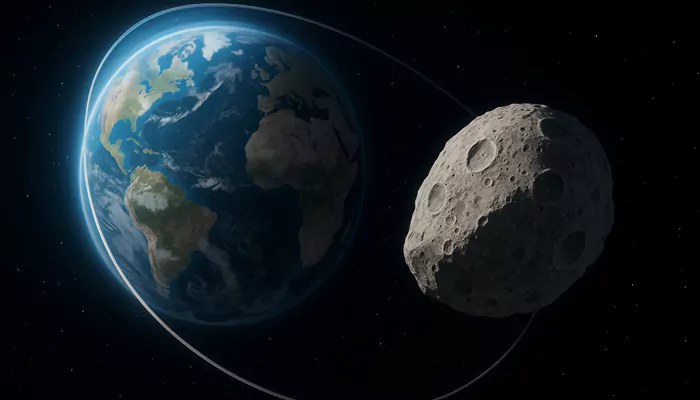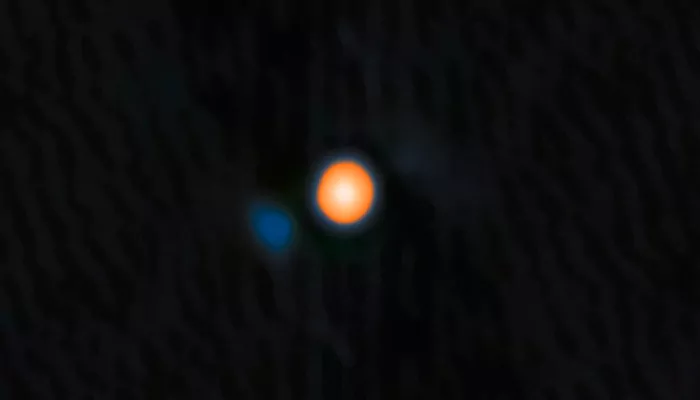
Here are today’s most important updates from the realm of Science and Space.
Scientists have found a small and icy object, designated 2023 KQ14 and nicknamed "Ammonite". It is far beyond Neptune and is currently orbiting the Sun. Ammonite, a name based on fossilised sea creatures, has been classified as a sednoid, not a planet or dwarf planet. Scientists have previously explained that a sednoid is a trans-Neptunian object (TNO) with a large semi-major axis, a distant perihelion and a highly eccentric orbit. This TNO is the fourth sednoid ever found. The object was discovered using the Subaru Telescope in Hawaii as part of the FOSSIL (Formation of the Outer Solar System: An Icy Legacy) survey project. The object is estimated to be 300-700 km in diameter and likely composed of ice, rock and organic compounds. The presence of objects with elongated orbits and large perihelion distances in this area implies that something extraordinary occurred during the ancient era when 2023 KQ14 formed.

Scientists estimate that Earth may have at least six "minimoons" at any given time. Notably, this number is uncertain, and the researchers have called for further observations to confirm. As per the new study, the minimoon is a colloquial term for natural objects that complete an orbit around the Earth within a geocentric distance of three Earth Hill radii while being temporarily bound in the Earth-Moon system (EMS). Scientists said minimoons are small, rocky fragments that temporarily orbit Earth before eventually moving on to circle the sun. They're usually less than 6.5 feet (2 metres) in size and can originate from various areas in the solar system, the study revealed. It's difficult to detect minimoons because of their small size and high speeds.

After a long wait, astronomers have finally observed the stellar companion of the famous star Betelgeuse. This companion star orbits Betelgeuse in an incredibly tight orbit, which could explain one of Betelgeuse's longstanding mysteries. The star is doomed, however, and the team behind this discovery predicts that Betelgeuse will cannibalize it in a few thousand years. Using the innovative ‘Alopeke instrument on the Gemini North telescope in Hawaii, one half of the International Gemini Observatory, researchers have solved a century-old mystery about Betelgeuse’s puzzling brightness changes and opened a new chapter in understanding red supergiants. Its sheer size, some 700 times the Sun’s radius, and fluctuating brightness have long made it a subject of fascination and confusion. Observations revealed that Betelgeuse’s glow varies not only in a cycle of about 400 days but also in a pronounced secondary pattern every six years.

Scientists have figured out the molecular system in our body that controls how hair grows. This could lead to new treatments that help people regrow hair naturally, without needing surgery, medicines, or hair transplants. The study suggests that the most common type of hair loss (called androgenetic alopecia) isn’t permanent. Instead, it's caused by a breakdown in the signals that tell hair to grow, and that process might be reversible. To fix this, the scientists suggest using certain treatments to wake the hair follicles up again. This could include boosting helpful signals, blocking harmful ones, using tools to fix faulty genes, or even using stem cells to support hair growth. If the upcoming tests go well, hair restoration in the future could rely not on cosmetics but on the body’s own ability to grow hair, scientists believe.